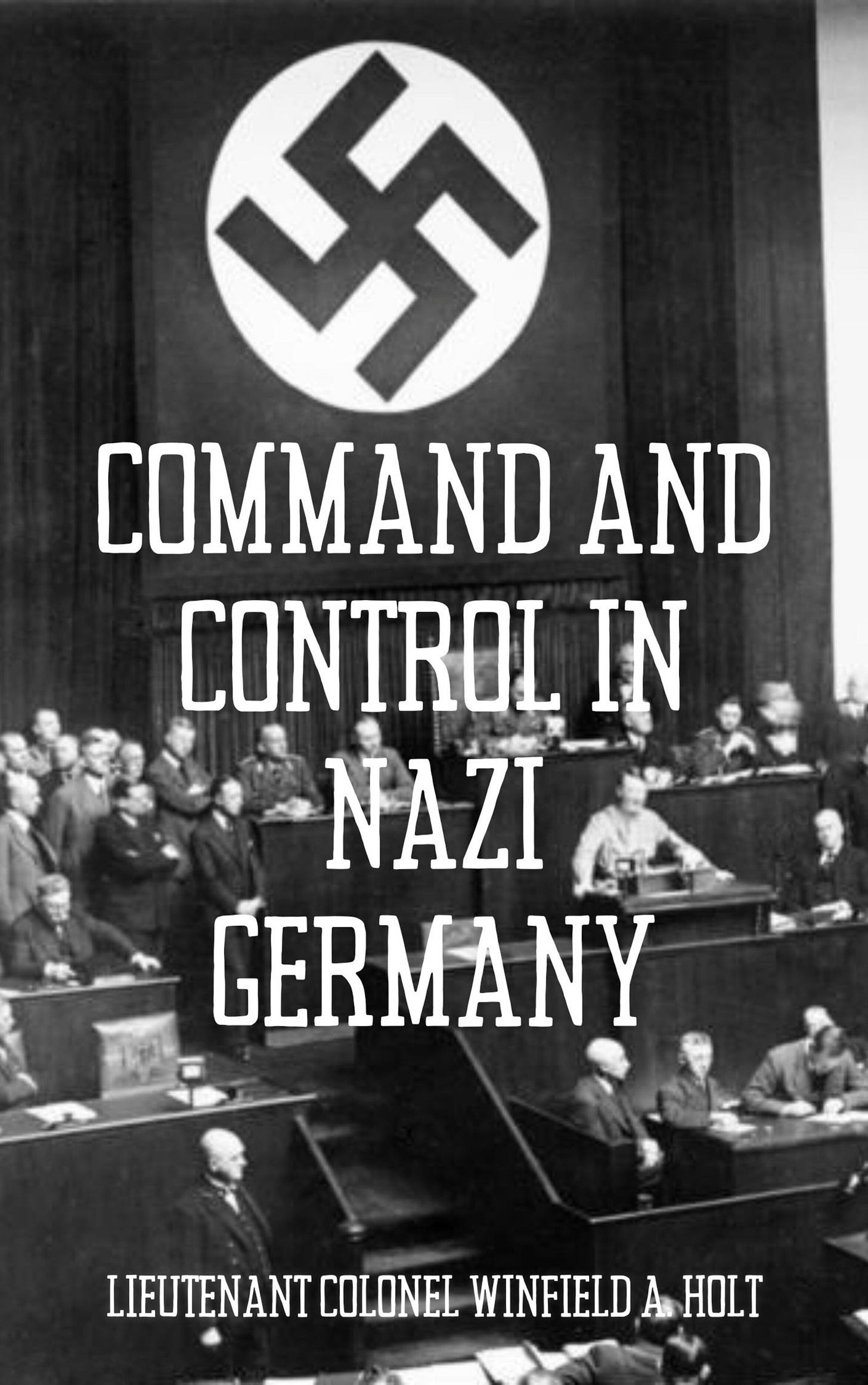Briefing Document: Adolf Hitler's Command and Control in Nazi Germany (1933-1938)
Source: Command and Control in Nazi Germany: A Monograph by Lieutenant Colonel Winfield A. Holt
Date: February 8, 1973
Theme: This monograph examines the methods employed by Adolf Hitler to establish totalitarian control over Germany during his rise to power between 1933 and 1938.
Key Findings:
Hitler's Manipulation: Holt argues that Hitler's success stemmed from a combination of legal maneuvering, nationalistic appeals, exploitation of special interest groups, and a calculated strategy of turning different factions against each other.
Control of the Military:Exploiting Existing Sentiment: Hitler inherited a Reichswehr (German Army) that was already disillusioned with the Weimar Republic and receptive to his nationalistic rhetoric. As General von Lossow stated during the Beer Hall Putsch trial, they saw in the Nazi movement "the power to make converts among the workers for the cause of nationalism."
The Oath: The oath of allegiance sworn to Hitler personally in August 1934, following Hindenburg's death and the SA purge, was a crucial turning point. It solidified Hitler's control, even though some, like General Beck, had reservations, calling it "the blackest day of my life."
Exploiting Ambition and Fear: The Blomberg-Fritsch crisis demonstrated Hitler's ruthlessness in eliminating opposition and rewarding loyalty. Through promotions, appointments (like Brauchitsch), and strategic allocation of funds, Hitler ensured the officer corps, despite moral qualms, was bound to him.
Control of the Press:Propaganda as a Tool: Hitler recognized the power of propaganda, as articulated in Mein Kampf: "The state must exercise particularly strict control over the press... [and] place it in the service of the state and nation."
Legal Framework for Control: The 1933 decrees establishing the Ministry of Public Enlightenment and Propaganda, headed by Goebbels, provided the legal basis for censoring and directing the press. The Editorial Control Law of October 1933 cemented this control, effectively silencing dissenting voices.
Methods of Control: Daily press conferences, controlled dissemination of information, and the threat of punishment (from admonishment to imprisonment) ensured compliance. This manipulation is evident in the orchestrated press coverage of the Sudetenland crisis.
Control of the Economy:Initial Pragmatism then Ruthless Control: While initially cautious, Hitler quickly moved to eliminate any challenges to his authority. Trade unions were dismantled, and prominent industrialists were placated with promises and then controlled through a web of contracts and the ever-present threat of the Enabling Act.
Schacht and Economic Manipulation: Hjalmar Schacht's "New Plan" for the economy, characterized by manipulation of trade, currency, and import/export regulations, played a crucial role in funding rearmament. Hitler's primary interest, as Schacht recalled, was whether these policies would "support rearmament and... alienate big business?"
Centralization of Power: By 1938, all aspects of the German economy – labor, industry, and capital – were firmly under Nazi control, primarily orchestrated through Goering.
Conclusion:
By 1938, through a combination of legal manipulation, brute force, and a keen understanding of human psychology, Hitler had consolidated his power, transforming Germany into a totalitarian state. He skillfully exploited existing institutions and sentiments, neutralized opposition, and created a climate of fear and obedience. This monograph provides a chilling insight into the methods employed by a dictator to achieve absolute control.















Share this post